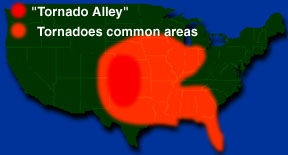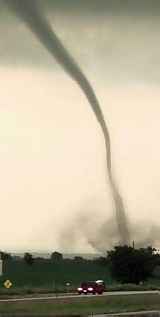

| FACTS ON TEXAS TORNADOES | Compared with other states, Texas ranks number 1 for frequency of tornadoes, number 1 for number of deaths, number 1 for injuries and number 1 for cost of damages. When we compare these statistics to other states by the frequency per square mile, Texas ranks number 10 for the frequency of tornadoes, number 16 for fatalities, number 21 for injuries per area, and number 21 for costs per area based on data from 1950 - 1995. In 1970, Texas had a population of 11,198,655 and between 1950 and 1995 Texas had 5,722 tornadoes. This ranks Texas number 1 in tornadoes by state. The population in 1970 divided by the number of tornadoes equals 1,957. This ranks Texas number 8 in the ratio of tornadoes to population. Texas had 478 fatalities between 1950 and 1995. Compared to other states it ranked 1. The risk of death in any one year is 1 in 1,054,267. This ranks Texas as number 7 for the risk of death by tornadoes . Between 1950 and 1995, Texas had 7,554 injuries involving tornadoes. This ranks Texas number 1 among the United States for injury. The risk of injury in any one year is one in 66,712. When we divide the population by the number of injuries, Texas ranks number 7. The total cost of tornadoes between 1950 and 1995 was $1,986,918,400.00. This ranks Texas number 1. The cost per person for tornadoes in Texas per year is $ 3.94. This ranks Texas number 12 in costs for tornadoes per person . In an average year, 800 tornadoes are reported nationwide, resulting in 80 deaths and over 1,500 injuries. |
|---|



 |


